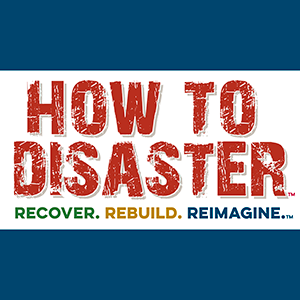Take 5 – Before the Fire – A Focus on Vegetation and Land Management
“There is a viable way to make money and contribute to keeping your community protected and fed at the same time.” -Algeo Che Casul
“The forest has changed dramatically from what would have been a more sustainable framework, and yet we’re very attached to the way it looks today.” –Dr. Lisa Micheli
“We’re looking to set the stage that our communities can be more resilient and our ecosystems can sustain.” -Marko Bey
“We all need to make changes in order to address this climate chaos that we’re in. We got ourselves here and we can get ourselves out.” -Belinda Brown
Mega wildfires are an anomaly. They aren’t supposed to happen. Fires aren’t supposed to burn millions of acres of land in a single year. More than that, they aren’t supposed to be a multi-billion dollar problem. This episode is focused on private landowners and the role they play in preventing and mitigating fire risks on their land.
Our guests, 7th generation rancher Algeo Che Casul, Pepperwood CEO Dr. Lisa Micheli, and Lomakatsi Restoration Project’s Marko Bey and Belinda Brown talk about how prescribed fire can be an effective strategy in preventing mega-fires, how to train the younger generation for the big work ahead, and how to prioritize the work that needs to be done.
We are making decisions today that impact not only us but also the next seven generations that are yet to come. While our knowledge and resources may be limited at present, there is something we can do to leverage them. Tune in and discover how to connect indigenous practices and Western knowledge to create better outcomes!
Highlights:
- 01:34: S2 Ep5- How to Manage Private Lands in the Era of Mega Fires with Algeo Che Casul
- 04:34: S2 Ep11- Episode 11: How to Manage Wildlands Collaboratively in the Era of Megafire with Lisa Micheli, Ph.D.
- 08:52: S2 Ep14- How to Implement Ecosystem & Forest Restoration Using Indigenous Practices with Marko Bey and Belinda Brown
Quotes:
04:00: “In getting young people involved in agriculture, there’s going to be this new push.” –Algeo Che Casul
04:26: “There is a viable way to make money and contribute to keeping your community protected and fed at the same time.” –Algeo Che Casul
07:38: “We live in a fire-adapted ecosystem. It was likely to happen to us sooner or later.” –Dr. Lisa Micheli
08:41: “The forest has changed dramatically from what would have been a more sustainable framework, and yet we’re very attached to the way it looks today.” –Dr. Lisa Micheli
10:42: “We’re looking to set the stage that our communities can be more resilient and our ecosystems can sustain.” -Marko Bey
11:45: “Now that we know more, maybe we can do better. It is our responsibility individually and collectively to take all the good information in, all the best practices, and rethink and redesign what we’re doing.” -Belinda Brown
12:48: “We all need to make changes in order to address this climate chaos that we’re in. We got ourselves here and we can get ourselves out.” -Belinda Brown
13:19: “When we stop and get a little bit of that Aboriginal thought process going, we’re all going to be possibly gentler with ourselves, and maybe a little bit wiser about the decisions that we’re making for ourselves and the communities where we belong.” -Belinda Brown
Meet Che:
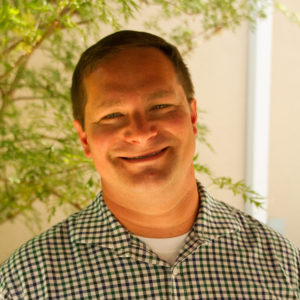 Algeo Che Casul, or “Che” for short, is a seventh-generation Sonoma County rancher, working on the same ranch as his great-great-great-great grandfather. Wow! Che is the Volunteer and Community Development Manager at Habitat for Humanity of Sonoma County and spends his free time tending to his land near Bodega Bay with his herds of goats, sheep, and cattle. Che met his wife in Paris, France in 2009, and their first kiss was at night under the Eiffel Tower, a story he loves to tell anyone who will listen, which embarrasses his wife to no end. Besides being a devoted husband, Che is an avid hunter, mushroom forager, and obsessive ocean fisherman.
Algeo Che Casul, or “Che” for short, is a seventh-generation Sonoma County rancher, working on the same ranch as his great-great-great-great grandfather. Wow! Che is the Volunteer and Community Development Manager at Habitat for Humanity of Sonoma County and spends his free time tending to his land near Bodega Bay with his herds of goats, sheep, and cattle. Che met his wife in Paris, France in 2009, and their first kiss was at night under the Eiffel Tower, a story he loves to tell anyone who will listen, which embarrasses his wife to no end. Besides being a devoted husband, Che is an avid hunter, mushroom forager, and obsessive ocean fisherman.
Meet Dr. Micheli:
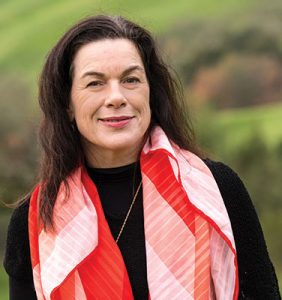 Dr. Lisa Micheli joined Sonoma County’s Pepperwood Preserve Foundation in October of 2009 as its inaugural Executive Director and now serves as the organization’s President and CEO. She brings more than 30 years of experience applying her technical, policy, and fundraising expertise to the design and implementation of ecological restoration, research, and education programs. She started her career at the US Environmental Protection Agency and then completed her graduate studies at UC Berkeley as a NASA Earth Systems Research Fellow in 2000. She now focuses her research on relationships between climate, watershed health, and biodiversity and has published numerous peer-reviewed studies on river restoration, climate adaptation, and community-based approaches to biodiversity conservation.
Dr. Lisa Micheli joined Sonoma County’s Pepperwood Preserve Foundation in October of 2009 as its inaugural Executive Director and now serves as the organization’s President and CEO. She brings more than 30 years of experience applying her technical, policy, and fundraising expertise to the design and implementation of ecological restoration, research, and education programs. She started her career at the US Environmental Protection Agency and then completed her graduate studies at UC Berkeley as a NASA Earth Systems Research Fellow in 2000. She now focuses her research on relationships between climate, watershed health, and biodiversity and has published numerous peer-reviewed studies on river restoration, climate adaptation, and community-based approaches to biodiversity conservation.
Micheli specializes in facilitating interdisciplinary collaborations focused on using relevant research to craft collective solutions to today’s most pressing landscape conservation challenges. She serves as the co-chair of Pepperwood’s Terrestrial Biodiversity Climate Change Collaborative (TBC3), a Gordon and Betty Moore Foundation Bay Area climate adaptation research initiative, with Dr. David Ackerly, Dean of UC Berkeley’s College of Natural Resources. She also chairs the Golden Gate Biosphere Reserve team of the international Large Landscape Conservation Peer Network facilitated by the Lincoln Institute of Land Policy. She has been recognized as a Phi Beta Kappa scholar, a Robert and Patricia Switzer Foundation Environmental Leader, a Bay Nature Institute Local Hero for Environmental Education, and a Fellow of the California Academy of Sciences. She is a member of the American Geophysical Union and the Society for Conservation Biology. Dr. Micheli serves as a director of the Rebuild North Bay Foundation and as a science advisor to the Sempervirens Fund, the Chile-California Conservation Network, the Bay Area Open Space Council, and the Water Research Foundation.
Connect with Pepperwood Foundation:
Meet Marko Bey:
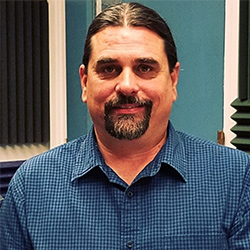 Executive Director and Lomakatsi’s Co-Founder, Marko oversees all aspects of the organization’s efforts, working in close coordination with the Board of Directors. Marko’s central focus is on program and organizational development, project procurement, planning, and operations. His other responsibilities include grant writing and fundraising, technical planning, and the management of cooperative agreements, stewardship agreements, and contracts.
Executive Director and Lomakatsi’s Co-Founder, Marko oversees all aspects of the organization’s efforts, working in close coordination with the Board of Directors. Marko’s central focus is on program and organizational development, project procurement, planning, and operations. His other responsibilities include grant writing and fundraising, technical planning, and the management of cooperative agreements, stewardship agreements, and contracts.
Lomakatsi’s ten regional ecosystem restoration programs and associated workforce initiatives are a primary result of his work. Most essential has been his leadership in the orchestration and formation of collaborative partnerships — partnerships that are strengthened by a wide variety of stakeholders, including federal and state agencies, Indian tribes, organizations, private landowners, and community members.
Meet Belinda:
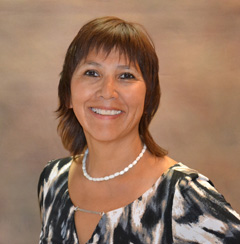 Belinda serves as Lomakatsi’s Tribal Partnership Director and operates within the framework of Lomakatsi’s Tribal Partnership Program and associated initiatives. Belinda works closely with Lomakatsi’s Executive Director and staff leadership to serve tribal communities in their efforts to restore forests and watersheds on tribal trust and ancestral lands. She serves as a community liaison, engaging with tribal elders, tribal councils, cultural resource monitors, and tribal department staff. Belinda also works to establish and promote effective working relationships among the tribal community, Lomakatsi, and federal agency and non-profit partners.
Belinda serves as Lomakatsi’s Tribal Partnership Director and operates within the framework of Lomakatsi’s Tribal Partnership Program and associated initiatives. Belinda works closely with Lomakatsi’s Executive Director and staff leadership to serve tribal communities in their efforts to restore forests and watersheds on tribal trust and ancestral lands. She serves as a community liaison, engaging with tribal elders, tribal councils, cultural resource monitors, and tribal department staff. Belinda also works to establish and promote effective working relationships among the tribal community, Lomakatsi, and federal agency and non-profit partners.
Connect with Lomakatsi Restoration Project:
Transcription:
Jennifer Gray Thompson: Welcome to Season 3 of the How to Disaster Podcast where we help you recover, rebuild and reimagine. During this season, we will be releasing Take 5 shorter episodes that highlight some of our past guests speaking about similar issues, themes, topics. We wanted to do this so that perhaps would be easier if you only have a few minutes, but you wanted to connect with these focused episodes and guests that you can condense all their messages into one smaller bite sized piece.
One of the things that we know about disasters is that we really have to meet people where they’re at. And sometimes, where you’re at is you only have five minutes. We’re very excited for the third season. We’ve got great guests, wonderful information and content about how to actually help get your community through to the other side. So thank you for joining us.
And if you wish to find out more, please visit our homepage at afterthefireusa.org. Consider giving us a like or follow if you like this podcast, we really appreciate it, and thank you for your time
From Season 2, Episode 5: How to Manage Private Land in the Era of Megafires, Algeo Che Casul, a 7th Generation Sonoma County Landowner and the CEO of Circuit Writers.
Algeo Che Casul: One of the pieces that I get really excited about is prescribed fire, which makes people very, very nervous. But as an example, while I grew up, my grandfather, when I was five or six, would light patches on fire and just sit there with a shovel and put them out with a shovel if they got out of control. And that used to be a much larger landscape application by my family. I did a prescribed burn last year, 33 acres. When I was calling all of our neighbors, they became very nervous, and rightfully so because we’re literally in the middle of the Walbridge Fire when I was proposing to do a prescribed fire. But all of them were recent. They’ve moved here within the last generation or so, that’s recent to us, except for this older gentleman across the highway that had been ranching in my grandmother’s time. And when I called him, he said: “Well, we used to do that in the flats all the time until the government told me we couldn’t anymore.” And so for him, it was just a way of life that wasn’t allowed anymore. And so he was actually very excited to hear that that was coming back and to learn about how he could possibly do that again as well.
“In getting young people involved in agriculture, there’s going to be this new push.” -Algeo Che Casul
California currently, but hopefully soon the world program that will match grazers with fallow lands. So say that if you have brushy land, you can go out there and you can find some goats. Or if you have large amounts of grassland, you report the grassland and you can bring in some sheep or some cattles eat that down. It was created by the University of California extension. They like to call it a dating service for grazing, and it has been a wild success. One of the issues with that website, but within general in California is that there’s not a lot of agriculturalists left. I don’t have enough goats right now. I’ve been building my herd for five or six years to graze my own property, much less my neighbors. And so getting young people involved in agriculture, I think there’s going to be this new push because, as I said earlier, we don’t make a lot of money. But if there’s a way that you can graze, sell the meat from these animals and also get paid to do mitigation on properties, I can see a lot of the brain drain that we’re experiencing in Sonoma County of young people leaving because it’s a rural area. There’s not a lot of opportunities, because there is a viable way to make money and contribute to keeping your community protected and fed at the same time.
“There is a viable way to make money and contribute to keeping your community protected and fed at the same time.” -Algeo Che Casul
From Season 2, Episode 11: How to Manage Wild Lands Collaboratively in the Era of Megafires. CEO and President of Pepperwood Preserve Foundation, Lisa Micheli, PhD.
Lisa Micheli: I first got involved with this war, and I think he always needs to go to the boots on the ground people to figure out what’s going on. I talked to our local CalFire vegetation management team members and said: “Well, how do you prioritize where work needs to happen?” And they said: “Well, we get in our trucks and we drive around, and we look for problem areas.” And I said: “But you have maps theoretically of where fuels are hazardous or where there’s high fire severity risks.” And they said: “Yeah, but those are statewide maps, and this is a lot of the work that [inaudible] gets involved in.” So statewide map. It’s intended to give decision makers in Sacramento a snapshot of conditions. It’s not really meant to be used for planning exactly where to do work on the ground. So we were excited because we’ve been very involved with using new kinds of data sources, sensors that can be put on airplanes, sensors that can be put on satellites to help map these forest resources. And that technology is just getting good enough now that you can really start to see individual trees. And we can fly an airplane over with a laser and get through a 3D map of the forest structure, which is not just the top of the canopy and the number of trees. That’s been a big focus, but what’s underneath?
“We live in a fire-adapted ecosystem. It was likely to happen to us sooner or later.” –Dr. Lisa Micheli
So a lot of what we’ve learned is that the risk of fire is really correlated with how dense, what we call the vegetation fuels are in the sub canopy. The stuff that’s growing close to the ground, it’s shrubby, it’s young doug fir saplings, and we call those ladder fuels. Those are fuels that the fire will climb up, those smaller trees or shrubs and get up into the canopy. And we’re able to show that these ladder fuels combined with a drought metric, which my team had developed are the two best predictors of where the canopy burned off in 2017. That was a study done with NASA.
“The forest has changed dramatically from what would have been a more sustainable framework, and yet we’re very attached to the way it looks today.” –Dr. Lisa Micheli
What first surprised me is that we were even surprised. Because the scientists that we knew that, we lived in a fire adapted ecosystem, and it was likely to happen to us sooner or later. And even though we had that information, we were just as shocked and impacted as anyone else in the community. We’ve been doing a lot of work to connect indigenous people and indigenous knowledge to our Western scientific knowledge. And I think first of all, just understanding that the state of the forest, as we, in the 20th century look at it, actually reflects from a Native American point of view, a lack of stewardship. And so we knew at Pepperwood that we had about 10 times as many trees per unit area as probably where they’re historically under native stewardship, and this is because we largely stopped fire from coming in, we’ve been really good at putting fires out. And so in our area, which is characterized by these gorgeous oak woodlands or hardwood and mixed montane hardwood, say compared to this here is where you have mostly Christmas trees. The forest has really changed dramatically from what would have been a more sustainable framework, and yet we’re very attached to the way it looks today.
From Season 2, Episode 14: How to Implement Ecosystem and Forest Restoration Using Indigenous Practices. Executive Director, Mark Bey, and Tribal Partnerships Director, Belinda Brown from the Lomakatsi Restoration Project.
Marko Bey: This is what gets folks like us out of bed in the morning. We’re making a living, not killing it at work. The people that we work with, we’re passionate about it. We care about it. But I wanted to share one quick story. There was a fire that happened in late April in one of the areas we’ve worked, it’s within the Klamath Reservation Forest, and even National Forest, a town called White Oregon. It’s pretty rural, but we implemented a project with a tribal workforce and in partnership with the Klamath Tribes several years back. That fire was a human post fire and it burned, they had all their resources on. It was very early pre fire season, but it was dry and the areas that weren’t needed burned really high intensity, standard placing. And the area that we treated, we thinned it, we commercially ecologically thinned it using local operators. We did an A to Z project.
“We’re looking to set the stage that our communities can be more resilient and our ecosystems can sustain.” -Marko Bey
Meaning, we did all the marking, the prescription, we did a whole training around it, and then we burned the slash, and then we under burn. That fire came back into that stand and it stayed completely on the ground. It burned at low intensity, all the pioneers still there and we just recently did a community tour of that area without, through a tribal workforce program. And it was amazing to see the results of the fire next to the area and the fire that had been unburned or burned. And that’s what we’re looking for. We’re looking to set the stage that our communities can be more resilient, our ecosystems can sustain because we care about these larger trees, and the diversity, and that people have good meaningful, paying jobs, good livelihoods, right livelihoods, working in their communities, caring for their land and caring for their community.
“Now that we know more, maybe we can do better. It is our responsibility individually and collectively to take all the good information in, all the best practices, and rethink and redesign what we’re doing.” -Belinda Brown
Belinda Brown: That’s difficult. And that’s difficult because I’m an aboriginal person. And so I’m going to be trying to be careful here and speak a little bit though for the animals and the wildlife that don’t have a voice. And we kind of took their territory, people kind of moved in on territory that maybe we didn’t think was real good. Maybe we could go rethink some of the planning and how we develop. And now that we know more, maybe we can do better. Again, it is our responsibility individually and collectively to take all the good information that we have now, all the best practices that we have now, and really possibly rethink and redesign what we’re doing. And that American dream to some was an American nightmare to others. And that’s where we need to come back to a base point of reference of, where do we go from here? And how do we all get there from here?
“We all need to make changes in order to address this climate chaos that we’re in. We got ourselves here and we can get ourselves out.” -Belinda Brown
And so every community with its shield graphical differences, with people differences, with all the diversity, equity inclusion, and that deep thought, and again, that collaborative partnership approach, that whole community approach to where do we go from here probably needs to be rethought. And we all need to make changes in order to address this climate chaos that we’re in. And we got ourselves here. We got ourselves here, and we can get ourselves out, or we can mitigate damages. There’s changes that need to be made. We need to think about the animals, our elders tell us, think about the fish, the wildlife, the generations that are coming after us, are we making decisions for those seven generations that are coming in the future? And I think when we stop and we can get a little bit of that Aboriginal thought process going, we’re all going to be possibly gentler with ourselves, and maybe a little bit wiser about the decisions that we’re making for ourselves in our communities and where we belong.
“When we stop and get a little bit of that Aboriginal thought process going, we’re all going to be possibly gentler with ourselves, and maybe a little bit wiser about the decisions that we’re making for ourselves and the communities where we belong.” -Belinda Brown

